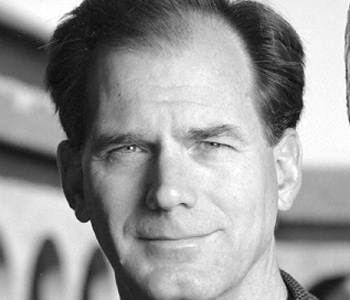Nancy Leys Stepan
Eradication: Ridding the World of Diseases Forever?
Cornell University Press
272 pages, 6 x 9 inches
ISBN 978 0801450587
Eradication tells the story of modern efforts to rid the world of diseases completely.
I use the term “eradication” in the book in its modern, precise, public health sense. Eradication does not mean disease control or reduction. It means the reduction of the incidence of a specific disease to zero, by deliberate human interventions.
Disease eradication therefore stands for an absolute, for a vision of the world free of some of the major scourges of human beings. It is highly idealistic goal, utopian even. As such, it seemed to me worth asking why such a utopian ideal was taken up in health circles, and with what effects?
I knew smallpox was the one disease that had been eradicated: its eradication was declared officially in 1980 by World Health Organization (WHO).
And since it was the only one, I thought it might be a one-off and rather curious exception to usual international health efforts.
But a little investigation showed this was far from the case.
Yes, smallpox is the only disease we have eradicated completely so far—but eradication campaigns have been conducted against many other diseases, such as yaws, hookworm disease, yellow fever and malaria. Polio and Guinea Worm disease are currently the focus of two major eradication campaigns, and recently the Bill and Melinda Gates Foundation has vowed to try and eradicate malaria—once again.
These health campaigns have been amongst the most costly and complex efforts ever undertaken in international health. They have involved the resources of most of their day’s major international health organizations, from the Rockefeller Foundation in the pre-World War II decades, to WHO and others after the war.
It seemed then, that telling the story of eradication, from its early twentieth century origins to the present, would introduce me, and the reader, to a huge slice of international health history.
I was lucky because I came to the story via a particular person, Fred Lowe Soper, whose work on yellow fever I already knew about.
Soper, it turned out, was the arch-eradicationist of his day (and his day spanned almost the entire twentieth century). He was the person who popularized the idea of disease eradication as an absolute; he participated in nearly all the major eradication campaigns of the century.
The book is not a biography of Soper; but his life, his discussions, his friendships and his actions provide a chronological framework for a history of an idea in public health that has been highly influential yet also curiously neglected in history books.
Soper has the virtue, as a character, of being very sure of himself, a person of great tenacity and will-power, with all the strengths and weaknesses of a true believer.
He spent years working abroad in public health, running, for instance, a massive yellow fever eradication program, convinced of the rightness of his goal (though we know now that yellow fever cannot, for biological reasons, be eradicated).
Soper left a huge number of documents. He had many critics. Indeed, eradication continues to be controversial. For all these reasons, he was the perfect person through which to evaluate the history of eradication.
I took up the topic of eradication in the aftermath of 9/11, when after the anthrax scare, the idea of bioterrorism entered political discourse.
Smallpox was suddenly being talked about because, since routine vaccination had been given up following smallpox’s eradication, the entire world was vulnerable to a potential smallpox bioterrorism attack.
I hasten to add that bioterrorism is not my subject. Disease eradication is.
But from smallpox I was led back to the entire history of the concept of absolute eradication. This in turn made me engage with some of the major issues on the global health agenda.
To take one big question: What role have public health interventions played in the improvements in life expectancy we see in the world over the last century or more? Is an eradication campaign the kind of the public health intervention that has contributed greatly to improved life expectancy, or not? Or is overall economic growth a more important determinant of health improvements? What about the role of routine, basic health services, such as maternal and child care?
The Malaria Eradication Programme (MEP), which I examine in Chapter 4 of the book, is particularly salient to these issues. Launched by WHO in 1955, it became the single largest eradication campaign of all. Based largely on DDT-spraying of the transmitting mosquitoes and their larvae, the MEP led to dramatic declines in malaria incidence in many places.
But malaria proved a much more complicated disease than originally thought. The top-down, one-plan-fits-all mode of eradication could not adapt to the very varied ecological and political situations in which the national eradication campaigns had to operate.
Eventually, in 1969, WHO gave up the goal, replacing it with the more modest one of “malaria control.” In many places this was a recipe for the collapse of anti-malaria efforts; malaria returned, often in epidemic form.
But in some countries, the low incidence achieved by the MEP was sustained for years, sometimes decades.
In this regard, India offers an intriguing contrast to Africa. India, with the single largest MEP, reduced its malaria morbidity and mortality dramatically in the post-independence decades (from an estimated 100 million cases and a million deaths a year in 1951 to less than 1,000 deaths a year fifty years later (in a population double the size). The figures have risen since then, but this was nevertheless a very considerable reduction.
Meanwhile, of the estimated 300-500 million malaria infections, and one million deaths, that occur each year today worldwide, 90% are found in Africa, the area of the world that had been essentially left out of the malaria eradication effort, and that today is the chief focus of international health aid.
Does the contrast suggest we need to re-consider the malaria eradication effort? Did malaria reduction contribute to the improved life expectancy that occurred in India in the same period, or were other factors, such as price controls on food, equally important? Is the Gates Foundation pinning too many hopes on high-tech solutions, neglecting the underlying socio-economic determinants of the disease? This is the “wide angle” I take on disease eradication.
I think I would like your “browsing reader” to first open the book at p. 12, and read through to p. 17—to get a quick introduction to Fred Lowe Soper, learn why he is so controversial within the history of public health, and why he is such a useful foil in discussing eradication.
I started out with a rather negative impression of Soper. He was not a handsome man, by any means!
But more seriously, he came burdened by a negative reputation because he was such a determined proponent of disease eradication.
But as I read through the huge collection of documents Soper left to the National Library of Medicine, my impression of him altered.
His career certainly contrasts with the career of many of today’s “experts” who rush off to spend five or six weeks in Nigeria, or Ethiopia, advising and consulting on foreign-funded health aid programs, and then rush back to the safety of their homes and careers in Europe or the United States.
Soper spent over 20 years working in often tough conditions in the Americas for the Rockefeller Foundation. In Brazil, in the 1930s, he eradicated a malaria mosquito, and almost managed to eradicate the urban yellow fever mosquito. After war service, he traveled tirelessly across the Americas as Director of the Pan American Health Organization (PAHO, the Americas office of WHO), as well as made many journeys to Asia and Europe, as he led the way in eradication efforts.
Soper was brilliant in the field; one of his contemporaries described him as “one of the grand seigneurs in international public health.”
Soper was a curious mix of the idealist and the pragmatist.
He was an idealist in thinking that nearly all diseases could be eradicated. He was a practical man of action and a magnificent director of large-scale health initiatives.
If anything, Soper thought in most cases no new scientific research was needed to conquer diseases; what was needed was to apply what was already known, in a systematic way, to achieve the final zero.
Soper rarely asked himself whether it was politically wise, and socially useful, to eradicate a disease; if the scientific and technical means were there (and he often, mistakenly, thought they were), then he believed we had a moral duty to eradicate.
At times, Soper’s idealism got the better of him. His support for eradication became “eradicationism”—a faith, a utopian dream of a disease-free world.
But as someone has said, eradication is an absolute term that demands a degree of perfection. And the trouble with perfection is that it is hard to achieve—witness the difficulty of actually eradicating a disease.
Nevertheless, though I have my reservations about eradication, I find it hard not to give more than just a grudging respect to Soper. And for the historian, his quirky personality, his talent for spotting talent, and his memorable sayings, were a gift! In so many ways Soper did indeed encompass all the positive and negative things about eradication.
It would be nice if this book was useful to people involved in current efforts to solve the problems of diseases like malaria, or tuberculosis, in Africa and elsewhere.




We don't put paywalls. We don't distract you with ads. We don't sell your data.
Please help to keep this running!